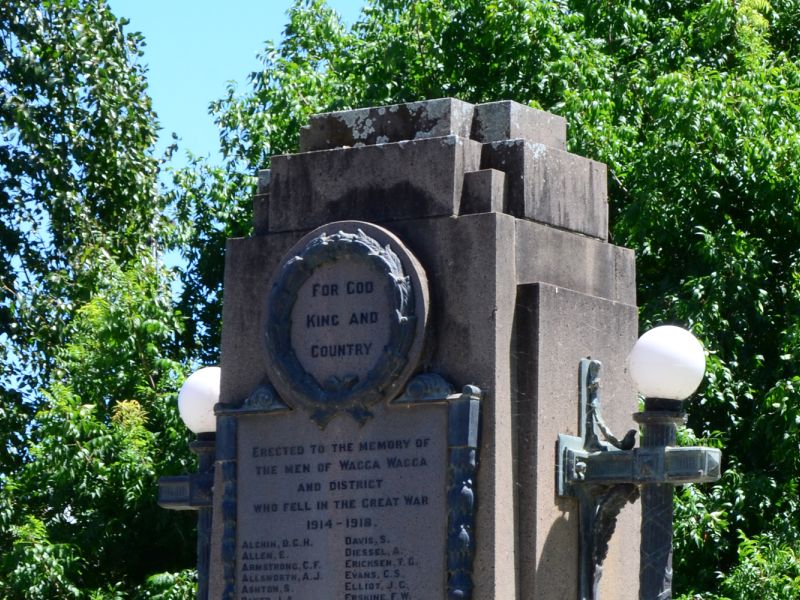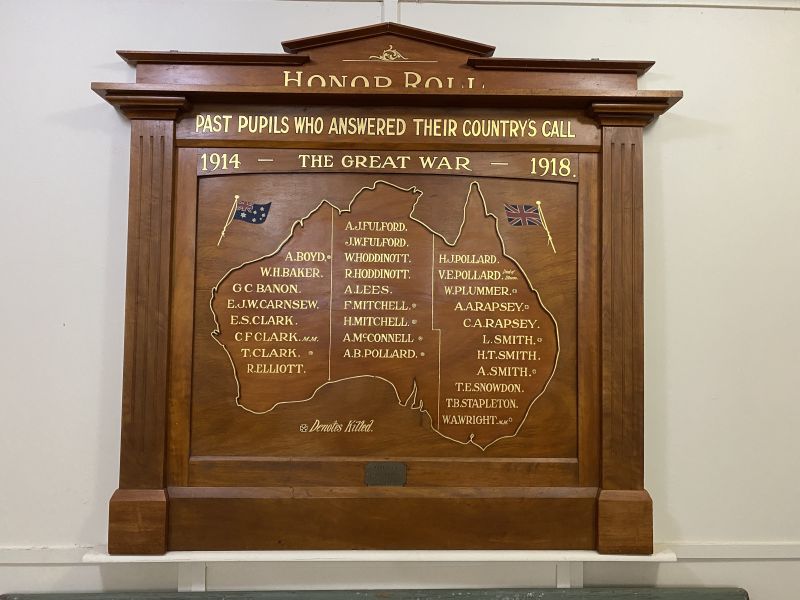Walter Leslie Plummer
Walter was born in 1894 at Bonegilla, Victoria. He was the eldest son of Thomas Edgar and Isabella Margaret (née Lawrence) Plummer. Records indicate that Walter could have been a twin with a sister, Ruby Florence, who died when she and Walter were one year old. Walter would go on to be the eldest of his six siblings. The Plummer family owned land on the Kiewa River flats at the eastern end Huon Hill. The children attended Bonegilla State School during their earlier years.Walter would attend Wagga Wagga High School and go on to be an apprentice hairdresser with C B Hutchings in Wagga.
On the 26th of October, 1916, Walter put his signature on his enlistment papers at the enlistment centre in Albury, New South Wales. On the same day he had been passed as medically fit by Captain R Roberston of the Australian Army Medical Corps. He was alloted the Regimental Number 7060 and originally placed in the Albury Depot Battalion. One week later he was transferred to the 23rd Reinforcements for the 3rd Battalion and moved to Liverpool near Sydney. Walter embarked on HMAT A24 Benalla at Sydney on the 9th of November. During the passage to England he seemed to have got himself into a little trouble. “4.12.16 AWL (absent without leave) making false statement of name and Btn (Battalion) with intent to deceive award forfeits 4 days pay by Lt. Col (Lieutenant Colonel) P.W. Fallon 8.12.16. Total forfeiture 5 days pay.” The Benalla docked at Plymouth Harbour on the 9th day of the new year.
After further training the 23rd Reinforcements proceeded overseas to France, embarking on a transport at Folkestone. They arrived at the 1st Australian Base Depot at Etaples where they underwent even more training. Walter was taken on strength with the 3rd Battalion on the 2nd of May 1917.
The 1st Division were committed to fighting at Menin Road during late September and it would be here that Walter had his first experience of a major offensive. The next offensive, which was only a few days after Menin Road, was the attack launched to capture Broodseinde Ridge. On the 2nd of October the battalion moved out of their bivouac area at Chateau Segard and marched to ANZAC Ridge. As they moved towards the assembly line a hostile aircraft dropped three bombs near the end of the column. This resulted in seventeen casualties. At 0345 the battalion formed up on the tape line ready for the assault. The enemy opened up with their artillery at 0530. Thirty minutes later the Australian artillery opened up which resulted in an easing up of the German barrage. It was zero hour and Walter and his mates would have stood up and started walking across no-mans land. Just before the Australian troops reached the first line of enemy concrete pill boxes Walter was hit by shell fire.
Walter’s Red Cross file includes a number of soldiers who said they witnessed his death. The accounts show how witness statements can vary, and hence how difficult it can be to reach a conclusion as to how a person died. One witness states that he was “blown to pieces, we couldn’t find enough of him to bury”, whilst another states that he was “transferred to a hospital”. The majority state that he was wounded on the morning of the 4th of October and was carried back to a dressing station by a 2nd Battalion stretcher bearer, who turned out to be a close friend of Walters. Unfortunately he died due to his wounds and was initially buried at the dressing station on Anzac Ridge.
The location of his original grave was not found and he is officially listed as having no known grave. He is remembered on the Australian War Memorial Roll of Honour, the Menin Gate Memorial in Ypres, Flanders, Belgium, the Wagga Wagga Cenotaph, the Wagga Wagga Victory Memorial Arch, and the Bonegilla State School Honor Roll. For his service during the First World War, he was awarded the British War Medal and the Victory Medal.
 Stephen Learmonth
Stephen Learmonth
